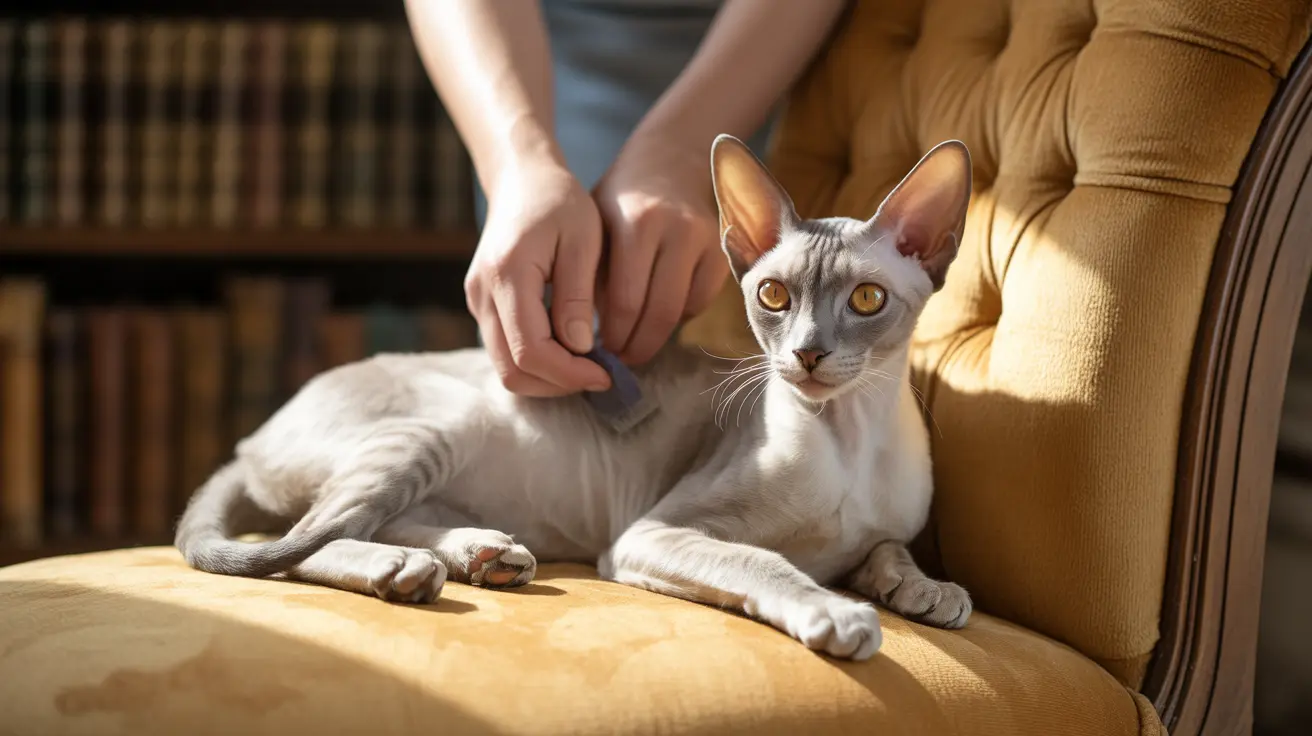When it comes to pesky parasites that can plague our feline friends, understanding the key differences between cat lice and fleas is crucial for effective treatment. While both can cause discomfort and health issues for cats, these parasites have distinct characteristics, behaviors, and treatment requirements that every cat owner should know about.
In this comprehensive guide, we'll explore the unique features of cat lice versus fleas, helping you identify, treat, and prevent these common parasitic problems. Whether you're dealing with an active infestation or wanting to protect your cat, this information will prove invaluable for maintaining your pet's health and comfort.
Physical Characteristics and Identification
Cat lice are small (1-2mm), grayish-white parasites that move slowly through your cat's fur. They have distinctive triangular heads and tend to stay close to the skin. Their eggs, called nits, appear as tiny white specks firmly attached to individual hair shafts.
Fleas, on the other hand, are larger (1.5-4mm) and dark reddish-brown in color. They're most recognizable by their impressive jumping ability and quick movement through your cat's coat. You might also notice "flea dirt" – small black specks that turn reddish when wet, which are actually flea droppings containing digested blood.
Life Cycles and Transmission Methods
Cat lice spend their entire life cycle on your cat, making them somewhat easier to eliminate once detected. They spread primarily through direct contact between cats or through shared grooming tools and bedding.
Fleas have a more complex life cycle that includes stages both on and off your pet. They lay eggs that fall into the environment, where they develop into larvae and pupae before emerging as adult fleas. This environmental component makes flea infestations particularly challenging to eliminate completely.
Health Impacts and Risks
Effects on Cats
Both parasites can cause significant discomfort and health issues for cats. Lice typically cause intense itching, poor coat condition, and hair loss, particularly around the ears, neck, and rear area. Severe infestations can lead to skin infections and general deterioration of health.
Flea infestations often result in more serious health concerns, including:
- Flea allergy dermatitis
- Anemia (especially dangerous in kittens)
- Tapeworm infections
- Potential transmission of other diseases
Risks to Humans and Other Pets
Cat lice are species-specific and cannot infest humans or other animals. Fleas, however, can affect multiple species and pose risks to both humans and other pets in the household, potentially transmitting diseases like cat scratch disease (Bartonella) and tapeworms.
Treatment Approaches
Treating Cat Lice
Effective lice treatment typically involves:
- Veterinary-prescribed topical treatments
- Regular application every 2 weeks for at least 4 treatments
- Thorough cleaning of bedding and grooming tools
- Treating all affected cats simultaneously
Treating Fleas
Flea treatment requires a more comprehensive approach:
- Monthly preventative medications (oral or topical)
- Environmental treatment including vacuuming and washing bedding
- Possible use of household sprays or foggers
- Long-term prevention strategies
Prevention Strategies
Preventing both parasites requires regular preventative measures:
- Monthly flea prevention treatments
- Regular grooming and inspection
- Maintaining clean living spaces
- Limiting exposure to potentially infected animals
- Regular veterinary check-ups
Frequently Asked Questions
How can I tell if my cat has lice or fleas based on their appearance and behavior?
Look for size and color differences: lice are small and grayish-white, moving slowly through the fur, while fleas are larger, dark reddish-brown, and jump quickly. Lice eggs (nits) attach firmly to hair shafts, while flea dirt appears as black specks that turn red when wet.
What are the main differences in the life cycles and transmission of cat lice versus fleas?
Cat lice complete their entire life cycle on the host cat and spread through direct contact. Fleas have a complex life cycle with environmental stages, laying eggs that fall off the cat and develop in the surrounding environment before reinfesting hosts.
What health risks do cat lice and fleas pose to my cat and my household?
Cat lice cause primarily skin irritation and discomfort but don't transmit diseases. Fleas can cause more serious issues including anemia, allergic reactions, and can transmit diseases to both cats and humans, including tapeworms and cat scratch disease.
How do I properly treat and prevent lice infestations compared to flea infestations on my cat?
Lice treatment focuses on topical medications and treating affected cats, while flea treatment requires both treating the cat and the environment. Both require veterinary-prescribed products, but flea prevention typically needs ongoing monthly treatment.
Can cat lice infest humans or other pets, and how does this differ from flea transmission?
Cat lice are species-specific and cannot infest humans or other animals. Fleas, however, can affect multiple species including humans, dogs, and cats, making them a broader health concern requiring more comprehensive management.






